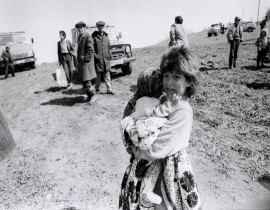Politicon.co
Difai: an early political organization of the Azerbaijanis
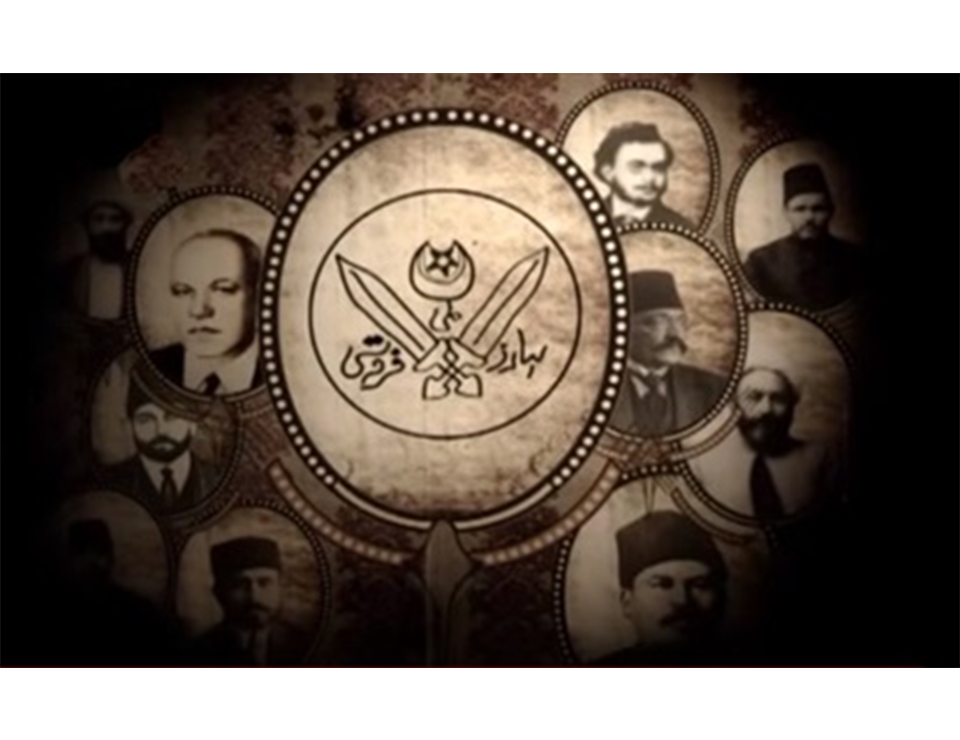
In the early years of 20th century, the situation in Russia was politically and economically very challenging. While the Empire had fallen behind leading countries in terms of industrialization, unemployment, as well as stratification in society had risen, generating attraction in socialist ideas.
The South Caucasus with Turks (Azerbaijanis), Georgians and Armenians was even more complex. In the context of an ethnic conflict between the Azerbaijanis and Armenians, the latter were historically an important Christian outpost for Russian authorities in a Muslim-dominated region. Influenced by revolutionary ideas from Russia and inspired by the Armenian question, some Armenian parties, namely Hunchakian and Dashnaktsutyun aimed to create their own state, also at the expense of Azerbaijani-populated areas. To resist Armenian-led aggression, terror and ethnic cleansing, the Azerbaijanis also established their own political organization, Difai. But what were the targets and activities of Difai?
Relations between ethnic groups
In order to answer the aforementioned question, we should check the political situation in South Caucasus prior to the 1905-1907 Armenian-Azerbaijani confrontation.
The Russian-Armenian relations altered dramatically in 1898 because of a governmental decision on subjugating Armenian Church schools to Ministry of Education. It generated anti-Russian sentiments among Armenian patriots. Additionally, in June 1903, Russian Emperor signed an edict bringing Armenian Church property under imperial control. These developments led to Armenian terror against Russian officials. For example, on 14 October 1903, General Grigory Golitsyn was wounded in an assassination attempt by Armenian Misak Engoyev. Next year, in 1904, a high-ranking officer in Elisabethpol Governorate - present-day Ganja - Andrey Filimonovich Andreyev was killed by Dashnaktsutyun members. Furthermore, several policemen were found dead.
These developments, as well as the weakening of Russian authority as a result of the defeat in Russo-Japanese war, sparked a big fire in South Caucasus. The first fire blazed up in Baku from February 6 to 9 in 1905 after the murder of a rich Muslim Agharza Babayev by Armenians. Between these days, both of the belligerents lost approximately a thousand people. From the perspective of many people, the biggest fault lay with negligence of Russian police. The contemporary Azerbaijani journalist and satirist Jalil Mammadguluzadeh wrote in his magazine, Molla Nasraddin, on this problem: “What a mystery is that when the Armenian-Azerbaijani conflict started, for some reason, government soldiers were sick and doctors did not let them out.” Moreover, senator Kuzminsky informed in his report: “Several months before the February events, a rumor on disruption between Tatars and Armenians was circulating in Baku. Police chief Deminsky had been warned about this rumor. Undoubtedly, the governor had also had a chance to learn about it. However, no measures were taken to prevent the forthcoming conflict.”
British Vice-Consul in Baku Ronald MacDonnell mentioned the passiveness of the Muslims, especially the rich, to defend their nation (“The Muslim people as a whole played the role of passive observers”) and noted that had Muslims entered the conflict altogether, not a single Armenian would have been left alive. According to Firuz Kazemzadeh, a famous Yale professor, the Dashnaktsutyun bore the main share of responsibility as the driving force against the Muslims.
Another incident happened in August, when oil mines in Balakhani, Sabunchu, Ramani, and Bibiheybet were burned.
In most areas, the conflicts were initiated by the Armenians. For example, in 1905, Dashnak troops attacked the village of Qacar in Jabrayil province. They were defeated as nearly 400 Armenians were killed by poorly-armed Azerbaijanis. The Dashnaks faced another defeat in Shusha. In 1906, they attacked Shusha again, this time with the support of General Goloschapov, who had provided weaponry and soldiers for the assault.
In general, the Armenians and Azerbaijanis faced in bloody and violent incidents across Elisabethpol, Zangazur, Erivan, and Nakhchivan in 1905-1907; these episodes took thousands of lives and planted long-lasting distrust between the two ethnic groups, which has been continuing until now.
Creation of a political organization
Representatives of Azerbaijani and Armenian intelligentsia assembled in Tiflis between February 20 and March 6, 1906 to reach peace under the auspices of Count Illarion Vorontsov-Dashkov, the new governor of the Caucasus Viceroyalty. Ahmed bey Aghayev, Adil khan Ziyadkhanov, Alakbar Khasmammadov, Israfil Hajiyev, Alimardan bey Topchubashov were among the Azerbaijani delegates.
The Azerbaijani party accused the authorities of the conflict and invited them to assume their responsibilities. Moreover, Aghayev warned that if the Armenians did not stop their barbarous behaviors, the Azerbaijani side would also answer with blood. The negotiations finished with an agreement, while the government was seen as the main culprit behind the ethnic confrontation.
The same Aghayev was among the key figures who later established Difai. The exact place and date of its establishment is not known in historiography due to Difai’s policy of high secrecy. According to Naghi Sheykhzamanli, an active Difai member, the political organization was created in Ganja several months after the Ganja events. According to others, Difai was established in Baku in late 1906. Additionally, Turkish politician Yusuf Akçura gave credit to Aghayev in setting up a new party in 1905. In any case, Difai and its vision were products of the Armenian-Azerbaijani conflict.
Secrecy was one of the most outstanding aspects of the party. Unquestionably, after its establishment, almost all members were extremely loyal to Difai. For this reason, the government faced a huge difficulty in determining the leader and members of the secret organization.
What was the aim of Difai?
To understand the aim of Difai, we need to pay attention to its official statements and main activities. The first declaration of Difai was written by the distinguished religious leader Mahammad Pishnamazzadeh in the house of Azerbaijani politician and activist Alakbar Rafibeyli. The organization`s goal was clearly expressed in these lines: “As an organized military power and weapon supplier, Dashnaktsutyun is trying to subordinate all Armenians and Caucasus with force in order to achieve their principal purpose. Their main goal is to occupy the lands of Muslims after killing all of them in Caucasus. Dashnaktsutyun can be sure that we will never let the happiness of Armenians emerge on the misfortune of our nation.” In other words, Difai`s main vision was to prevent Dashnak terrorism in the region.
The second goal of the organization was to educate Azerbaijanis, especially those who lived in rural areas, introduce the idea of freedom to all inhabitants and strengthen national identity as a means for the nation`s survival.
Activities of Difai
Difai was very accurate on its policy of assassinations. Firstly, the members targeted only those people who had mistreated Azerbaijanis and supported Armenians during the ethnic confrontation. The target would usually be given three days for an apology. When he/she did not appreciate this opportunity for his/her life, after a few days - with high probability - this person would be found dead. Death news marked with Difai stamp would then be pinned on the wall to catch attention. The police were usually unable to identify assassins.
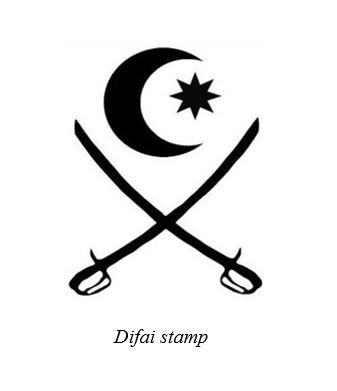
According to Naghi Sheykhzamanli, Difai`s first victims were Kireshchinsky, a clerk under Goloschapov, and Goloschapov himself because of their great support to Armenians in killing a large number of Azerbaijanis and destroying their houses.
Goloschapov`s assassin was Husu, an ordinary man from the village of Gulabli. Armed with a Smith & Wesson, Husu interestingly did not kill Goloschapov when the latter was on his way to a bath. “Even though he was my enemy, I let him go to afterworld with a clean body,” was Husu`s explanation for his strange behavior, while he had a great chance to do so.
After the assassinations, the police launched a comprehensive investigation. However, unable to track Difai down, the authorities announced 50,000 manats to anyone, who would give party members` names. Even such a great reward did not impress many local residents. When a Difai member, who worked in the police department found out that the so-called Molla Hadi had come to help the police in tracking the organization, he was urgently murdered.
In December 1906, Difai assassinated Engel, the old chief of Nakhcivan for his participation in Nakhcivan carnage with Armenians and his calls to murder Azerbaijanis. In May 1907, a pair of betrayers from Shusha, Mukhtar Jabbaroghlu and his son Rahim Mukhtaroghlu were eliminated by Difai. In July of the same year, Jakov was killed for his arms supply to Armenians. As a result, Difai`s influence grew, while officials became frightened for their lives. Unsurprisingly ordinary people would then address their problems to Difai instead of authorities, paralyzing the effect of government organs.
In March 1908, the Viceroy of Caucasus signed an ordinance on abolishing the activity of Difai. The organization`s members were eventually found by the police and sent to prison in different areas of Azerbaijan and Russia. The leader, Ahmed bey Aghayev had to leave for Turkey due to high pressure from government. Consequently, Difai completely lost its power and in 1917 merged with Turkic Federalist Party established by Nasib bey Yusifbeyli, who would serve as the second Prime Minister of Azerbaijani Democratic Republic (ADR) in 1919.
Conclusion
Despite of the fact that its activities took place in a very short period, Difai was very efficacious in terms of securing physical safety and education of Azerbaijanis. They would also propagandize freedom ideals for local inhabitants. We may even track the enormous contribution of Difai to the eventual creation of Azerbaijani Democratic Republic. For instance, Naghi Sheykhzamanli led ADR`s counterintelligence service, Khalil Khasmammadov served as justice minister and first ambassador of Azerbaijan to Ottoman Turkey, Behbud khan Javanshir was interior minister and deputy minister of trade and industry. Khudadat Rafibeyli, Alakbar Rafibeyli`s son, presided over ministry of health and governed Ganja.
Not much was known or studied about Difai during the Soviet time. After Azerbaijan`s re-independence in 1991, an interest in this secret organization that played a crucial role in our history, emerged again.
Bibliography
Əzizov E. (2009) Difai: Difai: XX əsrin əvvəllərində erməni-azərbaycanlı münaqişəsinin ilkin tarixi şərtləri və səbəbləri. Bakı, 364 s.
Qasımlı M. (2014) “Erməni məsələsi”ndən “erməni soyqırımı”na: gerçək tarix axtarışında (1724-1920). Bakı, 468 səh.
Odubadi M.S. (1911) Qanlı illər
Rüstəmxanlı, S. (2011) Difai fədailəri
Şeyxzamanlı, N. (2016) Xatirələr
About the author:
Huseyn Alili is a young researcher from Baku, Azerbaijan.
![]()
- TOPICS :
- History
- REGIONS :
- Russia and CIS

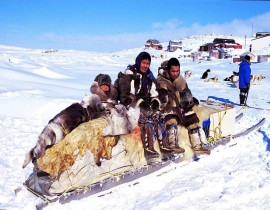
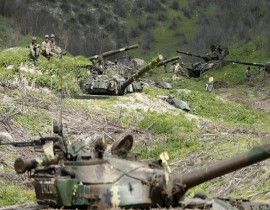

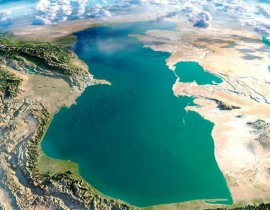
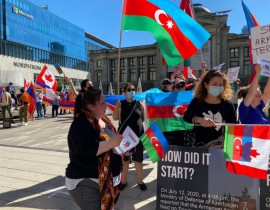
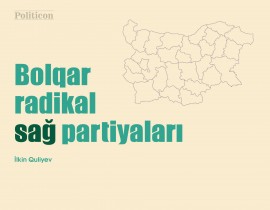
jpg-1599133320.jpg)
